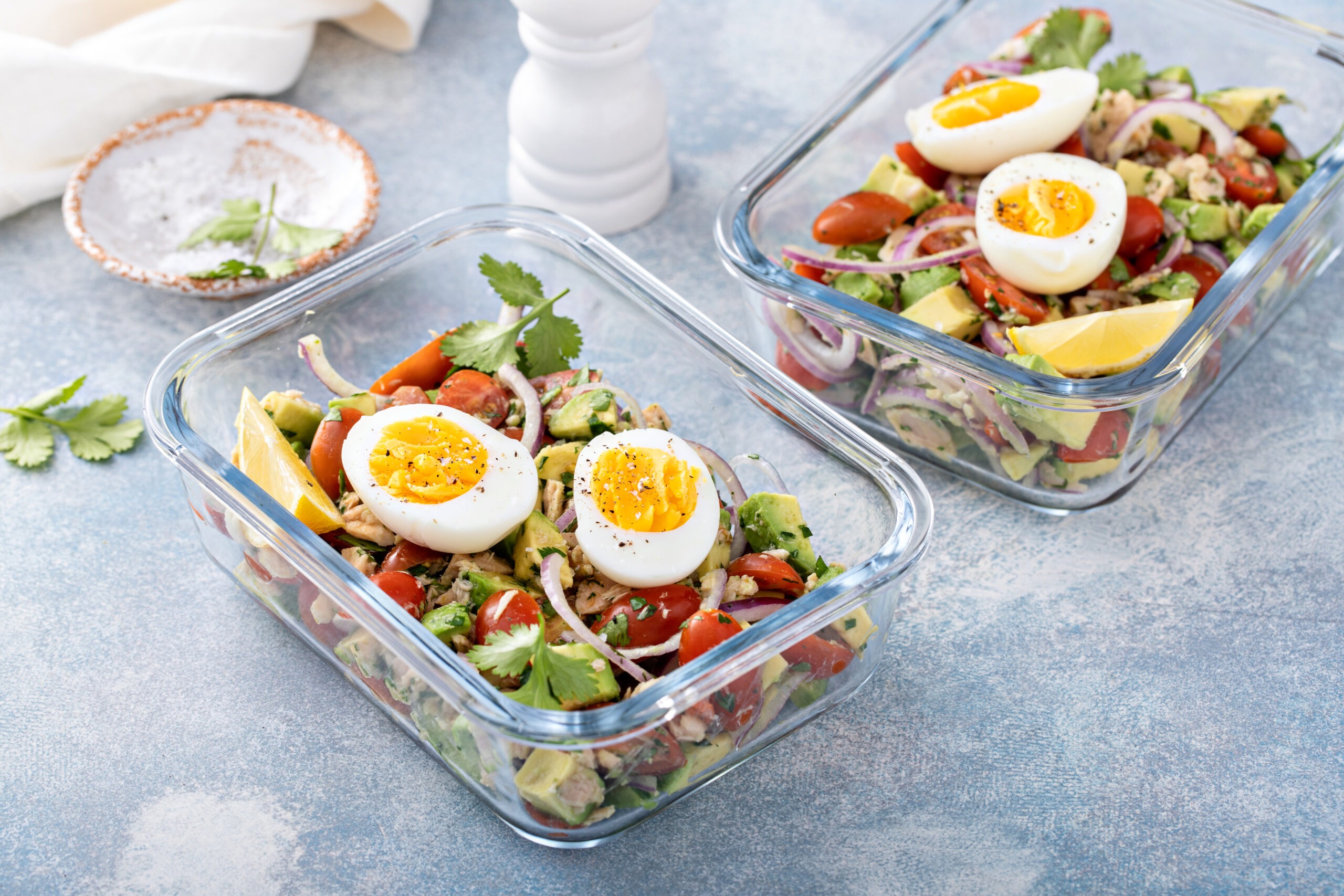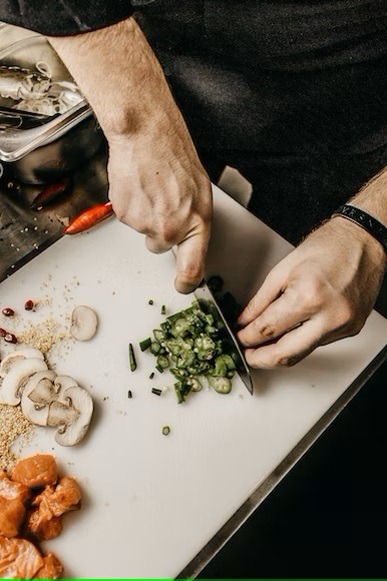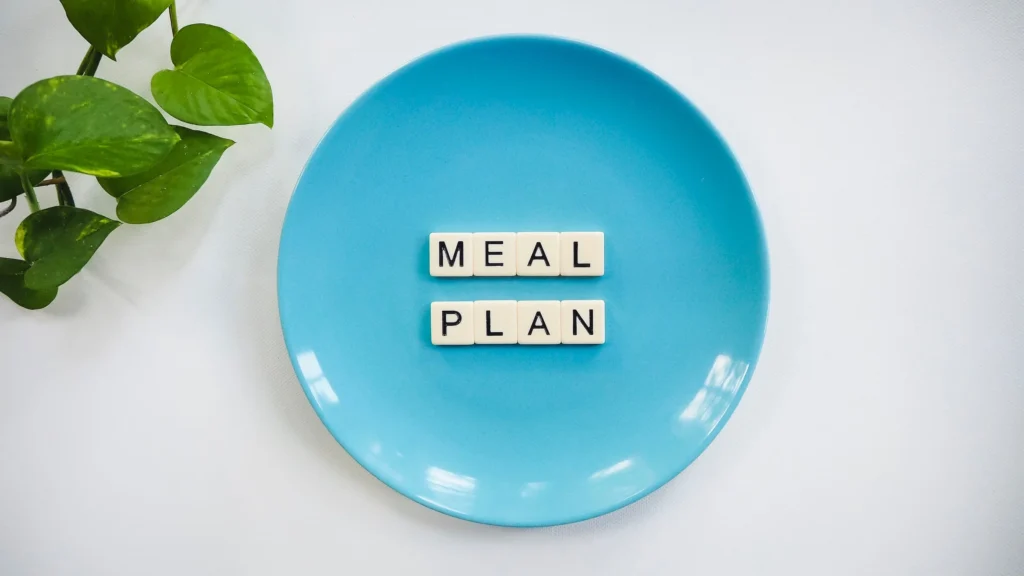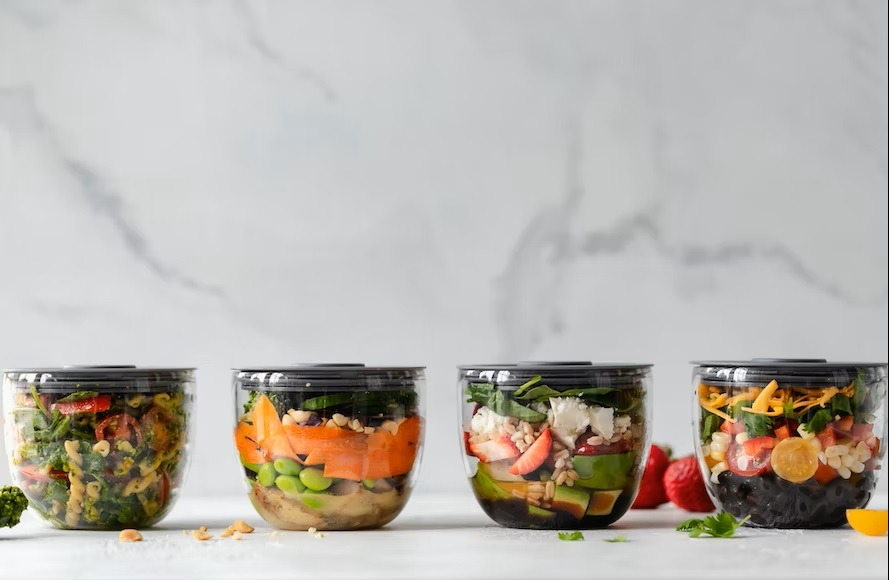A hectic lifestyle may make eating healthily difficult. After all, eating healthily requires time and effort that may be difficult to fit into your schedule. But what if we told you that this work wouldn’t take you more than two hours a week? Meal prep is the ultimate workweek solution.
When it comes to eating healthy, meal prepping changes everything. It makes healthy food choices easy and appealing to make during a busy workweek. It’s a great alternative to picking up fast food on your lunch break, since you’ll have a healthy and tasty meal ready to heat up in the microwave.
What is Meal Prep?
Due of its growing popularity, you’ve certainly heard the phrase “meal prep” a lot recently. Meal preparation is the practice of organizing, procuring, preparing, and storing meals and snacks for the week. Its goal is to make it simpler and more convenient to eat healthily during the workweek. Breakfast, lunch, supper, or all three may be prepared in advance. Each person’s requirements and schedule are different, so choose the meal planning strategy that works best for you.
Why Do Meal Prep?
There are several advantages to meal prepping, including:
-
You’ll save money
Eating at fast food places costs money. While fresh vegetables and high-quality protein may seem to be more expensive when purchased in bulk at a supermarket, it also means you won’t have to worry about what to eat for the rest of the week since you have enough food to last you that long.
-
Control On Serving Sizes
You won’t be able to consume too much. You won’t be able to eat more than you need to since all of your meals and snacks have been measured out for you.
-
It Makes It Easy to Make Healthy Choices
Once you have finished your weekly food preparation, nutritious meals and snacks will become convenient. It is simpler to grab a nutritious meal from the refrigerator on your way out the door than it is to grab fast food for breakfast or lunch.
-
You’ll Spend Less Time Cooking
Meal prep doesn’t take as much time or effort as you might think. Even though the process of actually preparing the meals can take anywhere from forty minutes to a couple of hours (depending on what you cook and how much of it you prepare), you won’t have to return to the kitchen for the rest of the week (other than to use the microwave, of course).
Tips for Meal Prepping
Having some of your meals, or at least the ingredients for them, prepared in advance may reduce your stress level all week long. If you’re ready to start meal prepping for your family, consider the following tips.
1. Create A Meal Plan
We have to start our list of time-saving tips for meal prep by talking about planning. First, choose your goal for meal preparation. Do you intend to cook meals for a few days this week, meals for the full week, or do you want to plan meals for two weeks at once? Choose your recipes after you have it sorted out. Don’t forget that, depending on how big your meals are, you can also plan for leftovers or dishes for the next day.
2. Create A Shopping List
Create a master shopping list that incorporates the needs of every dish, from main courses to appetizers. Add seasonings and herbs to your shopping list. Outline the markets or shops you must visit, and then set off!
3. Choose A Prep Day
When you cook more food at once, it is much simpler to pull together nutritious meals even on the busiest of days. Choose one day a week to make as many dishes as you can. And make it an enjoyable task! Play some music or make it a time for family bonding. Begin with two to three days’ worth of dishes and snacks if the idea of preparing meals for a whole week seems daunting.
On that day, begin with meals that need the greatest time in the oven or stove, such as roasting vegetables and cooking meat. After you have placed them on, you will be able to do quick tasks such as slicing vegetables, cleaning lettuce, placing oats on a container, and other similar activities. If you prefer not to pre-cook your meat, you may prepare it by marinating it so that it is ready to be tossed in the pan or oven as needed. Additionally, the meat becomes tastier as well!
4. Start Small
If you’ve never made a meal plan before or haven’t done it in a while, it may seem like a lot of work.
Creating a habit of meal planning is similar to making any other great adjustment in your life. Starting small and gradually gaining confidence is a terrific method to ensure the sustainability of a new habit.
Start by arranging a few meals or snacks for the next week. Eventually, you will determine which planning tactics work best, and you may gradually add additional meals to your plan as you see fit.
5. Get Organized
Organization is essential to the success of any meal plan.
Since you’ll know precisely what you have on hand and where your equipment and materials are, having an organized kitchen, pantry, and refrigerator makes everything from creating menus to grocery shopping and meal preparation a breeze.
There is no right or wrong way to set up your spaces for making meals. Just make sure that it is a system that works for you.
6. Maintain A Well-Stocked Pantry
Keeping a base stock of pantry staples is a great way to speed up meal prep and make it easier to come up with a menu.
Here are a few examples of nutritious and flexible pantry staples:
- Whole Grains: brown rice, quinoa, oats, whole-wheat pasta, and polenta
- Canned Goods: low-sodium broth, tomatoes, tomato sauce, olives, corn, tuna, salmon, chicken
- Oils: olive, avocado and coconut
- Legumes: canned or dried black beans, pinto beans, garbanzo beans,
- Fruits: apples, bananas, berries, peaches, oranges,
- Fresh vegetables – carrots, cabbage, bell peppers, celery
- Essentials for Baking – flour, cornstarch, baking powder, baking soda
- Other: butter, mixed nuts, dried fruit
7. Purchase High-Quality Storage Containers
One of the most important meal prep items is food storage containers.
If your cupboard is full of containers that don’t go together and don’t have lids, it may be very hard for you to prepare meals. Investing time and money on high-quality containers is certainly worth it.
Before making a purchase, consider how each container will be used. If you plan to freeze them, heat them in the microwave, or clean them in the dishwasher, make sure you buy containers that can handle those things.
Glass containers are microwave-safe and environmentally friendly. You can find them in many stores and online.
Also, it’s helpful to have different sizes for different kinds of food.
8. Determine What Kind of Prepping Works Best For YOU
We’re not here to advise you how to meal prep correctly.
Preparing meals may be done in a variety of ways. Perhaps in a week you want to stock your fridge with a variety of seasoned lentils and steamed potatoes. You might want to quickly grab your lunch to take to work or school. Perhaps you want to slice and dice everything in preparation so that you just need to add it to the pots and pans when necessary. Determine the kind of meal preparation you like for the foods you’re craving.
- Batch Prep: Batch prep is the process of preparing a large quantity of a meal or an ingredient for later consumption.
- Individual Pre-Cooked Meals: Fully cooked meals may be prepared in advance and reheated in the microwave or oven (if required) to be eaten on the go. It’s a great option for morning and afternoon meals, especially if you don’t have much time to cook.
- Ingredient Prepping: This way of making a meal doesn’t need to be cooked. All you have to do is wash, chop, slice, peel, or roast the food ahead of time so you can use it in recipes later.
- Portioning Things Out: If you want to save time and effort in the future, portion out meals or put them in single-serve containers, whether it’s a whole meal or a component of a meal. Simply pack it up, grab it, and go.
- Assemble-Ahead Meals: Most of the time, this type of meal prep is done with meals that go in the freezer, but you can often also store them in the fridge. It’s about putting together ingredients that go well together ahead of time, so all you have to do when you’re ready to cook them is dump them in a pot, pan, or slow cooker.
- Buffet-Style Prep: It involves preparing vegetables, proteins, carbohydrates, and other ingredients in advance and using them to create simple meals for the following days. This is ideal for salads, tacos, and other foods that need some “assembly.”
9. Modify Your Menu
It’s simple to get into a diet routine and eat the same things every day.
Your meals may easily become monotonous, resulting in a lack of culinary inspiration. In the worst case, the lack of variety may lead to nutrient deficiencies.
To prevent this, make it a habit to prepare different dishes or meals on a regular basis. If you usually eat brown rice, try quinoa or barley instead. If you usually eat broccoli, try cauliflower or asparagus as a variation.
You may also think about allowing the changing of the seasons alter your menu. You can change up your diet and save money by eating fruits and vegetables that are in season.
10. Make It Pleasurable
You are more likely to maintain your new meal planning practice if you find it pleasurable. Instead of seeing it as something you must do, try to reframe it as a kind of self-care.
If you’re the cook at home, think about including the whole family in meal preparation. Allow your family to assist you in chopping veggies or batch cooking soup for the week ahead so that these chores become valuable time spent together rather than simply another chore.
If you prefer to meal prep alone, you can listen to your favorite music, a podcast, or an audiobook. In time, it may become something you anticipate.
How Long May Meal Prep Be Stored in The Fridge?
Most meal prep recipes are designed to last for 3-5 days. However, it is dependent on the ingredients used. Here’s a basic guide:
- Chicken and meat have a shelf life of about five days
- Any meal you freeze (soups, stews, pastas, and some curries freeze best) will normally last up to three months, making it ideal for freezer
- Sauces and salad dressings may be stored for a minimum of two weeks and up to couple of months
- Homemade snacks may be stored in the fridge for up to two months
The Bottom Line
Meal prepping is a terrific method to save time and money while making better food choices. Though it may seem daunting at first, there are many ways you can use to build a lasting meal planning habit that fits your specific lifestyle.




